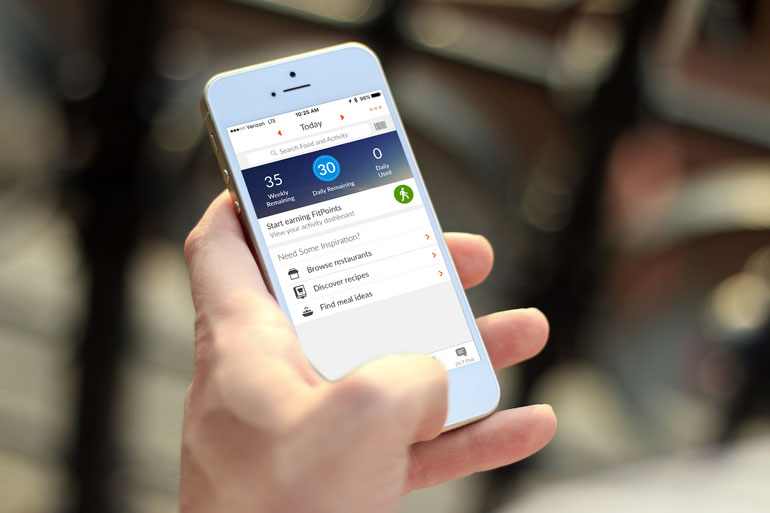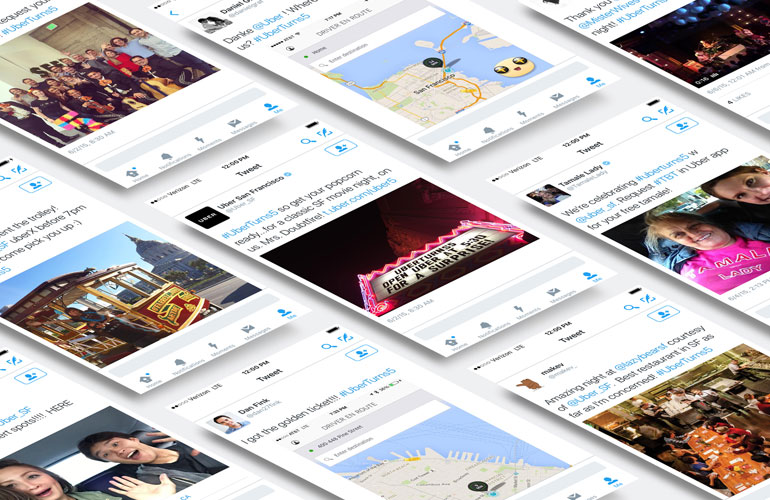By
Mark DiMassimo | 10/08/2020 | in
This story starts with a CMO getting fired, two months into a hundred million dollar campaign.
Fired, after hiring one of the best agencies in the business.
The campaign was expensive to produce. The whole team was so excited that they added a million dollars to the production budget to produce an additional spot.
The goal of the campaign was to recruit more users and activate them.
And here’s the rub – from the day it launched, this campaign drove recruitment numbers down.
Down is what led to out.
The CMO had been a strong marketer, with a record of selling consumer packaged goods, and sweet and salty snacks. But this was a different kind of organization – a behavior change marketing company.
The problem was, this company didn’t understand that they were in the behavior change marketing business.
All the senior leaders came from private equity or packaged goods.
Yet this company had a mission to help people improve their wellness. It did so through memberships and subscriptions with a heavy component of education and community.
A year earlier, our friend and former client had gone over to this company to work for the now-former CMO.
Our friend also had a package goods marketing background. To help our friend succeed in his new role, we told him,
“You’re playing a whole new game now, and this game is different. It’s behavior change marketing. That means recruiting members, selling subscriptions, building relationships, smoothing out gaps, drags, and blocks in the membership experience, designing for motivation and momentum at each moment, building a community. You’re playing the long game now.”
He listened politely and then said, “I think you’re right, but I’m new here. My boss has a plan. Let’s see how it goes.”
A year later, after the failed campaign and selling season, we got the call.
“The game plan you were telling me about… I need that now. And I don’t have much time to show a success.”
Behavior change must be taken in steps. It is a series of actions.
Actions are the result of motivation and ease coming together at the same time. The brand can help drive motivation, while design informed by behavioral science can reduce friction and complexity.
Solving the wrong behavior problem at the wrong time is too common. In the true story I told at the top of this post, the failed campaign aimed to recruit new members but focused on a promise to help them through the challenging times down the road.
After that decision, nothing else really mattered. The wonderful creativity of the agency people who worked on the campaign didn’t matter. The amazing production values and gorgeous editing of the spots didn’t matter.
The brilliant integration across platforms, digital and traditional advertising didn’t. The excellent media planning and buying only served to spread the fatal message virus. The wonderful public relations program only ensured that failure would be a famous one.
If you are in the business of helping people make better decisions or form more empowering habits, you are in the business of behavior change. Whether healthier, wealthier, wiser, kinder, saner, calmer, less anxious, better for the planet, happier, fitter, more resilient, a better citizen, better educated, or even just better entertained, if you are helping people to become better versions of themselves, you are in the business of behavior change.
If you are disrupting a category, you ask people to make a different decision and build a different habit. You are in the business of behavior change.
If you are working at a non-profit trying to scale positive impact, you are in the business of behavior change.
Marketing, branding, advertising, design, content, and community building for behavior change are different.
When marketers are new to behavior change, their agency contacts aren’t truly knowledgeable about the full range of behavior change marketing skills.
Most agency experience is still packaged goods experience. Shallow strategic thinking about awareness and preference may be appropriate for driving decisions between adjacent cans of soup on a grocery store shelf. This level of thinking is misapplied to behavior change
That’s why assembling a team to tackle these challenges is different too. When you work with the right team, you can achieve amazing and important things.
We can help great marketers become successful behavior change marketers. CEOs and Investors bring us in or recommend us for exactly this purpose.
This story has a happy ending.
We got to work with our friend on this brand and put in twelve quarters of record revenue growth before he left to take the CMO job at another company where his now proven behavior change marketing chops would be highly valued.
Of course, he hired us to work there too, so we got another great brand to work on. And the new management of the now successful first company have been great clients to us ever since.
Increasing recruitment led to over five million people enjoying the life-changing benefits of our client’s excellent service.
As one of our clients likes to say, “Now that ain’t salty snacks.”
About DiMassimo Goldstein (DiGo)
DiMassimo Goldstein (DiGo) is a Behavior Change Marketing agency, trusted by sophisticated marketers and committed change agents to understand complex situations quickly and to bring forward highly-effective creative solutions.
DiGo helps life-changing brands grow by helping people make more inspiring decisions and form more empowering habits.
The brand, advertising and design agency’s clients, from start-ups to blue chips, have built legendary brands that inspire action.
DiGo is applied behavioral scientists, growth strategists, brand planners, designers, writers, marketers, data storytellers, technologists, social and digital media experts, project managers, producers, artists and brand leaders – all of them change agents.
By
Team DIGO | 08/01/2019 | in

On this week’s episode of The A-List Podcast, host and DiMassimo Goldstein CCO, Tom Christmann is joined by none other than, our chief and the founder of DiMassimo Goldstein, the most Inspiring Action agency in the world, Mark DiMassimo!
Okay, we can’t lie, we’re obviously excited about this episode. As chief, Mark has overseen the production a lot of great work in the advertising space over the past 23 years. However, Mark was not always the leader of an ad agency…
After a career as a young entrepreneur and musician, Mark DiMassimo began his second career at twenty-five years old in the direct marketing division of BBDO. There, Mark apprenticed to the Direct Marketing author, Ed Nash, and soaked in the atmosphere at a time when direct marketers were entrepreneurial, and brands where built through direct marketing.
As an account executive and without asking permission, Mark started writing ads for a client that had frustrated the creative department into mass creative block. Instead of being fired, he was invited into the creative department with the proviso, “But you won’t be able to tell us what to do anymore.” With time, he emerged as a pre-eminent creative with his career took off due to his track record of success.
Mark worked on choice assignments and launched major brands with the philosophy of exploiting the blind spots of fellow direct marketers by using brand insights to create integrated brand response advertising campaigns that dramatically out-performed more tactical work.
Mark led integrated creative departments and produced notable work at some of the best creative agencies in the world before founding his own in 1996. He founded DiMassimo Goldstein in the spirit of leading the charge for “a brand revolution among direct marketers and a direct revolution among brand marketers” as well as laying the groundwork for our practice of #InspiringAction.
On this episode, we follow Mark through his career and delve into his gritty origin story from start to finish.
You’re not going to want to miss this one. Listen here!
Show Notes:
[0:00-3:00] Intro.
[3:01-7:25] Mark talks about growing up in NJ and his early upbringing.
[7:26-9:29] Mark’s imagination and first forays into creativity as a profession.
[9:29-13:46] Mark’s super-dark childhood short story and learning how to express himself.
[13:47-16:11] Wayne Dyer’s ‘Erroneous Zones’ as a marketing inspiration.
[16:13 -20:23] SUNY Fredonia, majoring in music, and discovering the library.
[21:17-24:45] Transferring to Cornell and Industrial and Labor Relations.
[24:54-27:44] How he made the switch to communications and ultimately deciding on Advertising as a career path.
[25:00-32:30] BBDO Direct and Mark’s first job working on brand accounts in advertising.
[32:31-40:20] Mark discusses his first creative experiences as a copywriter and being challenged for the first time.
[40:42-49:00] Being laid off, freelancing, and getting copywriter positions.
[49:15-55:59] Mark on his rise through the ranks and deciding to start his very own agency.
[56:00-57:37] Outro.
“The A-List” is a podcast produced by DiMassimo Goldstein, an inspiring action agency, recorded at the Gramercy Post, and sponsored by the Adhouse Advertising School, New York’s newest, smallest, and hippest ad school. You can subscribe and rate the show on iTunes or listen along on SoundCloud. For updates on upcoming episodes and guests, be sure to like the A-List Podcast on Facebook and follow host Tom Christmann on Twitter.
By
Team DIGO | 12/05/2017 | in
We can help people change their decisions and habits in ways that empower and delight them.
We combine the findings of behavioral economics, mobile clinical interventions, persuasion design, direct marketing, CRM, and decades of A/B split testing and optimizations into an integrated practice of behavior change marketing.
This video of our Chief recapping his time at the Yale Behavioral Economics Intensive dives into the topic in greater detail:
Want to learn even more about Behavior Change Marketing? These articles are a great place to start:
Behavior Change Science Update: Moral Reframing
What’s different about the one-in-a-thousand organization that thrives and outperforms? That builds a brand and inspires a movement?
Inspiring Action Brand of the Month: Duolingo
If you and your team are trying to build an inspiring action brand, or know anyone else who may find this helpful, feel free to share this amongst them. If you want to join the conversation yourself, reach out to us on twitter, we’d love to hear from you.
By
Team DIGO | 12/09/2016 | in
By James Nieman
This men’s apparel company was founded to fill the need for button-downed shirts designed to be worn untucked.
It’s an idea so simple and brilliant that they could express it in one word: UNTUCKit!
Why a brilliant idea? Because the world’s gone casual.
Beards are back. Man-buns are popping up from coast to coast. And businesses in nearly every industry are shifting toward more “laid-back” work environments.
But when co-founder Chris Riccombono tried to join the trend and let his button-downs hang loose, he noticed that they were all too long. They would hang like a tail, creating a sloppy, unkempt look that appeared more “clumsy” than “casual.” He hated that he looked as if he were wearing his shirt incorrectly.
(Are you sensing the beginning of a great founding legend?)
Riccombono couldn’t find a solution his problem, so he did what entrepreneurs do best. He recruited a Columbia University classmate, Aaron Sanandres, and together they founded UNTUCKit in 2011.

After consulting with several focus groups, the two began their design, eventually landing on a shirt that was short enough to leave a small portion of the pant pocket exposed but long enough to cover the belt. It was casual but also sharp and sophisticated.
With just a small marketing budget, Riccombono and Sanandres knew they had to advertise wisely. They started with radio advertising, reaching their target audience by appearing on popular podcasts and shows like The Howard Stern Show. They advertised in airline inflight magazines, which helped the company drive online sales.
Turns out Riccombono wasn’t the only one with his shirt problem. The company began to grow and grow fast. People had fallen in love with the concept. It was both totally odd yet completely practical at the same time. It took off.
Since then, the company has transformed from an online-only operation run from a Hoboken apartment to a fancy SoHo office and six brick-and-mortar stores nationwide. (From direct model to direct-led, as we say.) It offers everything from sport coats to socks and recently began selling women’s clothing as well.
But Riccombono’s business is only where it is today because he discovered a customer pain point.
And then set out to solve it brilliantly.
By
Team DIGO | 11/03/2016 | in
By Mark DiMassimo
Here’s how to get creative people to make you rich:

First off, don’t compromise.
Don’t give up one iota of ambition or one quantum of results orientation.
Don’t pretend to care about awards or fame or any of those other things that people think creative people care more about than money.
All you need to do is speak a language that lets creatives know that you are absolutely committed to BOTH – selling more and driving up brand value, money and relevant fame.
All you must do is never undermine their faith in your commitment to top-level achievement on BOTH of those scales, and then you win.
Sometimes this means saying “brand response” or “brand direct” instead of “direct response.” I know, it seems silly, but it’s a tell.
When you say “direct,” “direct marketing” or “direct response,” creatives hear, “Let’s just forget about who we are and what we want to stand for, and let’s just trick people into buying stuff.”
When you say “brand response” or “brand direct,” creatives hear, “I’m not sacrificing this brand for sales and I’m not sacrificing sales for this brand. Figure it out!”
Seems a small thing, but wait until you see how well it works! Because when you make it clear that you will settle for no less than success in the short run AND success in the long run, you become the client everyone in the shop wants to work for. You become the inspiring one.
When you show that you don’t buy the false choice between selling and brand building, you’ll see it in the eyes of the creative people you inspire. Because while, yes, a lot of creative people like awards and recognition, that’s not what they live for. What creative people live for is solving the most difficult problems brilliantly.
For more on how to get creative people to make you rich, consider using The 10 Signs of an Inspiring Action Brand as your roadmap.
By
Team DIGO | 10/20/2016 | in
By: Mark DiMassimo
There, we said it.
It feels good. For so long, we lived a double life, whispering direct words to our business friends while curbing our language around our creative friends.
We weren’t being overcautious. We needed these people to deliver the creative work that would drive the direct revolution. And we knew our target audience. As one creative director memorably said, “Whenever I hear that word, I lose my erection.”
Well, today we have a message for that creative director, his attitude, and every other vestige of the 20th century:
We’re direct. We’re erect. Deal with it.

There aren’t many creative agencies showing up on Inc.’s list of America’s fastest-growing private companies. We’ve been on the list three years in a row and running. We would have been on it for each of the previous ten years, at least, if only we’d had time to submit our audited financial statements.
Are we having trouble keeping it up? Absolutely not.
We’ve been a thriving, growing independent for two decades because we chose the right wave to ride, and because we kept paddling. That wave was the direct revolution. The direct revolution that is replacing middlemen with platforms, obliterating the hard distinction between consumers and marketers, and threatening traditional players in every marketing category.
Back then, people saw direct marketing as the Thighmaster and the Juiceman, but we knew direct would be Netflix, Dollar Shave Club, Warby Parker, Airbnb, Uber, Casper, and Betterment. We knew it would also be companies like Weight Watchers and American Express that were founded in another era but are finding ways to leverage the new platforms to modern-day marketing success.

Today, people want to deal directly with other people, and they’ve come to expect transparency and seamless connectivity. They want a direct experience. And today, creative people want to create direct experiences. They love designing actions that connect and deliver the brand experience through technology. They love building the brand in the interaction. Today, their biggest ideas are mobile, social, and responsive.

Today, we’re helping the pioneers of the direct economy in cultures dominated by technologists and financiers by connecting them with the people who can build their strategies and technologies into brands. Today, more strategies are becoming category-disrupting brands because of the creative people they rub up against.
And today, we’re at the table, redefining modern marketing and building the world’s leading brand response agency.
Today, we’re driving brand value up and cost-per-acquisition down.
Today, we’re inspiring action, and proudly direct.
By
Team DIGO | 10/07/2016 | in

I’ve noticed that people are surprised when some companies dramatically outperform other companies…
when they grow both revenue and brand value…
when they disrupt and then dominate their categories…
and when they sell or go public at phenomenal valuations…
But I’m not surprised.
I’ve studied those companies intensely for years. I’ve learned directly from the top decision makers exactly what they do differently. I’ve made them the focus of my career. And here I will share with you the single most important thing they do…
They define the word “brand” differently.
The great change agents, disruptors, and CMOs who can write their own tickets all have this in common. “Brand” means something very different to Dollar Shave Club, Airbnb, Warby Parker, and Casper than it does to most marketers.
Most marketers – and in fact, most business leaders – still associate “brand” with logos, style guides, naming conventions and brand ads. This is what I call small brand.
Not the big winners. They subscribe to the concept of BIG BRAND.
They understand that the brand, is first and foremost, an experience in the mind of the user. They understand that to manage that brand is their ultimate job; that it is in fact the main purpose of the organization. They understand that to manage that inner experience, they must design and direct all of the external evidence of the brand that the user experiences.
Therefore, these companies think of “brand” as the entire user experience, not just of the product and promotion, but of every touchpoint related to the brand. That’s Big Brand.
Then, in order to organize and change everything about the way the brand is experienced, they think about the brand this way:
• They think about the brand spirit. They get clear about what the spirit of the brand will be. That spirit will transform every touchpoint into a brand experience. For Tesla, it’s visionary, bold and futuristic. For Airbnb, it’s adventurous, social and natively comfortable. For Dollar Shave Club, it’s fun and frank and super-practical.
• They think about the brand meaning. They know that an inspiring idea can organize and change everything for the brand. They know that people want to buy into more than a value proposition; that they want to be part of something meaningful. For Casper, it’s a more rested culture. For Betterment, it’s a world of tech-savvy, smarter investors. For Tesla, it’s a world without smokestacks and rising oceans. For Dollar Shave Club, it’s a club of guys who look great and still have some money in their pockets.
• They think it applies to ALL their communications. Unlike small brand thinkers who often unthinkingly expose more people more often to brand-damaging promotional come-ons that sap the value of the brand, Big Brand thinkers view everything they do as part of the user experience, part of the brand. They generate more sales, more efficiently, by thinking brand response rather than direct response. In brand response, the brand insight makes customer acquisition more efficient while it builds brand value. The better it works, the more the company can afford to do. The more the company can afford to do, the more it sells and the more valuable its brand is. It’s a virtuous cycle. The opposite of the one that kills the small brand goose.
• They design phenomenal fulfillment experiences. Brand experience design is a mindset that pays huge returns. And it doesn’t have to cost a lot of money! It’s shocking to us that so many companies just deliver in a normal envelope or a cardboard box. It’s crazy that they don’t see their trucks, boxes, crates, envelopes, cards, keys, bags, packaging and even invoices as inspiring brand experiences ready to happen. We are appalled at the enormous waste of owned and tightly targeted media that is underutilized. Casper puts a whole mattress in a box – a story with every delivery! Dollar Shave Club includes Bathroom Notes with every well-designed delivery, mastering their brand domain. Our boxes for Gateway had spots, and you could see them from two blocks away. Our FreshDirect trucks became popular rolling billboards and backdrops for a million selfies. From our logo to every element of delivery packaging, we worked with our brilliant friends at HelloFresh to make every surface and gesture speak the brand. This year, we evolved Weight Watchers’ Starter Kit from a concept to an actual kit, and both recruitments and member results improved dramatically!


• They think about how media creates powerful brand associations. So, in addition to effectively increasing their media budget by 15% or more by insisting on transparent, accountable media, they also use a balanced scorecard for optimizations. This makes both acquisition efficiency and brand association central. It also includes location and purpose to, again, better align to the experience of the user.
• They think about being and doing the brand, not just marketing and promoting it. Because they know that today, everyone is connected to the true word-of-mouth about products and brands, they know that what they do and what they are means more than what they say they do and are.
And yes, they view the people who interact with their marketing as users and friends, rather than “targets” or even “audiences.” They know that today, people are trying to use our marketing and our brand to make meaningful and lasting changes in their own lives. Big Brand thinkers know that’s what we’re here for.
If this concept of Big Brand intrigues you, you may want to check out this roadmap. It’s the same one we use for smaller companies with smaller budgets to build dominant, category-disrupting big brands. It’s the same roadmap we use to help big companies to turn the ship around and succeed in our mobile-and-social-acquisition-driven marketplace.
I’d love to talk to you about Big Brand, Brand Response and Inspiring Action companies. Please don’t hesitate to reach out to @MarkDiMassimo or mark@digobrands.com.
By
Team DIGO | 09/29/2016 | in
For decades, Ty Shay has been the change agent that CEO’s dream of.
I was first introduced to Ty while he was the CMO of Hotwire.com.
“You had written a piece…it was about how the goal of the agency should be driving performance while at the same time driving a brand…It seemed like we were kindred spirits, which is why we made the change.” – Ty Shay
And kindred spirits we were. In just three quick years we were able to grow Hotwire.com from a Silicon Valley start-up to a top-five travel website, which is where it was when it sold for $663 million.
Since then, Ty has used the same brand response principles I wrote about in that piece to write his own ticket to any CMO job he wants.
So how can you be like Ty? How can you get any CMO job you want? Listen to the full interview below to find out:
If you’re interested in continuing the brand response conversation, email me at Mark@digobrands.com










